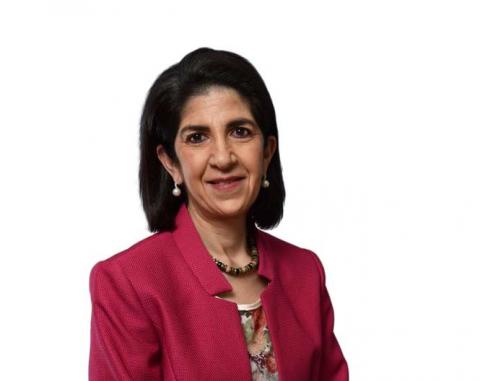The European strategy for particle physics (ESPP), updated by the CERN Council in June 2020, lays the foundations for a bright future for accelerator-based particle physics. Its 20 recommendations – covering the components of a compelling scientific programme for the short, medium and long terms, as well as the societal and environmental impact of the field, public engagement and support for early-career scientists – set out an ambitious but prudent approach to realise the post-LHC future in Europe within the worldwide context.
Full exploitation of the LHC and its high-luminosity upgrade is a major priority, both in terms of its physics potential and its role as a springboard to a future energy-frontier machine. The ESPP identified an electron–positron Higgs factory as the highest priority next collider. It also recommended that Europe, together with its international partners, investigate the technical and financial feasibility of a future hadron collider at CERN with a centre-of-mass energy of at least 100 TeV, with an electron–positron Higgs and electroweak factory as a possible first stage. Reinforced R&D on a range of accelerator technologies is another ESPP priority, as is continued support for a diverse scientific programme.
Implementation starts now
It is CERN’s role, in strong collaboration with other laboratories and institutions in Europe and beyond, to help translate the visionary scientific objectives of the ESPP update into reality. CERN’s recently approved medium-term plan (MTP), which covers the period 2021–2025, provides a first implementation of the ESPP vision.
Starting this year, CERN will deploy efforts on the feasibility study for a Future Circular Collider (FCC) as recommended by the ESPP update. One of the first goals is to verify that there are no showstoppers to building a 100 km tunnel in the Geneva region, and to gather pledges for the necessary funds to build it. The estimated FCC cost cannot be met only from CERN’s budget, and special contributions from non-Member States as well as new funding mechanisms will be required. Concerning the enabling technologies, the first priority is to demonstrate that the superconducting high-field magnets needed for 100 TeV (or more) proton–proton collisions in a 100 km tunnel can be made available on the mid-century time scale. To this end CERN is implementing a reinforced magnet R&D programme in partnership with industry and other institutions in Europe and beyond. Fresh resources will be used to explore low- and high-temperature superconducting materials, to develop magnet models towards industrialisation and cost reduction, and to build the needed test infrastructure. These studies will also have vast applications outside the field. Minimising the environmental impact of the tunnel, the colliders and detectors will be another major focus, as well as maximising the benefits to society from the transfer of FCC-related technologies.
The 2020 MTP includes resources to continue R&D on key technologies for the Compact Linear Collider and for the establishment of an international design study for a muon collider. Further advanced accelerator technologies will be pursued, as well as detector R&D and a new initiative on quantum technologies.
Scientific diversity is an important pillar of CERN’s programme and will continue to be supported. Resources for the CERN-hosted Physics Beyond Colliders study have been increased in the 2020 MTP and developments for long-baseline neutrino experiments in the US and Japan will continue at an intense pace via the CERN Neutrino Platform.
Immense impact
The discovery of the Higgs boson, a particle with unprecedented characteristics, has contributed to turning the focus of particle physics towards deep structural questions. Furthermore, many of the open questions in the microscopic world are increasingly intertwined with the universe at large. Continued progress on this rich and ambitious path of fundamental exploration requires a courageous, global experimental venture involving all the tools at our disposal: high-energy colliders, low-energy precision tests, observational cosmology, cosmic rays, dark-matter searches, gravitational waves, neutrinos, and many more. High-energy colliders, in particular, will continue to be an indispensable and irreplaceable tool to scrutinise nature at the smallest scales. If the FCC can be realised, its impact will be immense, not only on CERN’s future, but also on humanity’s knowledge.
______
This opinion piece was originally published in the CERN Courier.


